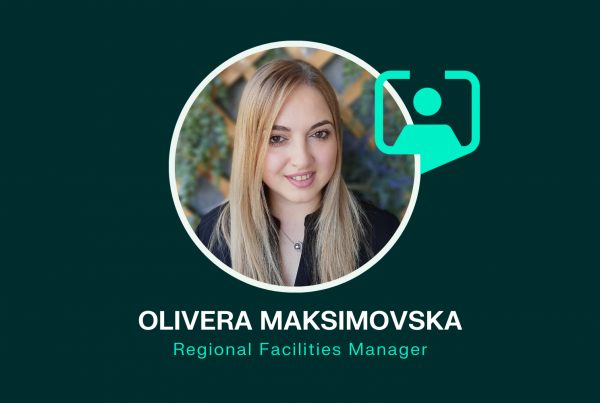Former UK Chief Nurse, Mike Wright MBA RN, compares the challenges between the UK and Australian healthcare systems and identifies the opportunities for the sector in Australia.
The need to understand if wards and departments are staffed safely is a constant challenge in any hospital and, in particular, for executive chief nurses and chief medical officers as the people accountable ultimately for the quality and safety of patient care in their organisations. This becomes even more complex the larger the organisation. The need to understand this fully and comprehensively on both a ‘real-time’ and aggregated basis is not only essential as part of a suite of information to determine if a ward or area is staffed safely but is also an essential part of an overall quality assurance system.
Being a Chief Nurse
The daily challenges for an Executive Chief Nurse are significant. On a clinical level, they need to know at any point during a shift if all wards are staffed safely. They also need to understand if patients getting the right care, that nurses and midwives are trained correctly, have the right skills and are practising safely and that student nurses are being supported/supervised properly.
From a managerial perspective, they need to understand if the N&M workforce resource is being deployed effectively and smartly. Chief nurses also need to be able to provide assurance to others (Trust Board/Board of Directors, Regulators, Commissioners) that patients and staff are safe, and that patient care is not being compromised either at all or specifically as a result of sub-optimal staffing levels. Another major factor relates to managing the money correctly, especially as nursing and midwifery are usually the largest staff group and overall budget in any hospital.
It follows then that chief nurses need a way of enabling them to reach conclusions on all of this and to be able to take any necessary corrective action to keep patients and staff safe. This can be daunting to achieve, especially in a large organisation. However, I have concluded rapidly that determining all of this is not possible without access to timely and comprehensive suites of information that are obtained from reliable systems/sources. In order to be able to reach any meaningful conclusion, it requires a combination of the following as an overall quality assurance process:

Quality Assurance Process – MWW Consulting Ltd
All of these component parts are necessary before any reasonable conclusions can be reached. However, the most important factor is the overall professional judgement that is applied to what this information is telling you. Nurses know about nursing and care environments better than anyone else; it is what we do! Senior nurses understand their teams, team dynamics and environmental factors. A lot of this cannot be written down or automated in a system. Therefore, the overlaying of professional instinct and judgement are essential and are required alongside good, timely and accurate information in order to be able to make sound judgements and conclusions.
My view of Australia’s healthcare
During my recent visit to Australia, I had the pleasure to join the amazing Allocate team in Melbourne and on the Gold Coast, to share my experiences as a former Chief Nurse in the NHS, particularly in relation to implementing and using their software packages.
One thing that struck me was that many of the problems and challenges in healthcare in the UK and Australia are very similar; from staffing levels to recruitment and retention challenges to the need to justify staffing levels and costs. This is all alongside the constant pressures to make savings.
The same issues exist from a technology perspective. It is essential to have good and accurate digital information to assist with decision making at both operational and strategic levels. This is in relation to things such as workforce data and patient-specific information (e.g. acuity/early warning systems). Also, the lack of standardised systems and integration across clinical information systems are possible/probable inhibitors to patient safety, ensuring/assuring seamless patient care and overall efficiency and effectiveness. Therefore, the more these can be standardised and connected, the easier this will become.
Other similarities I discovered were the same desire to ‘automate’ patient clinical assessments and acuity, such as patient vital signs monitoring, and to link this to workforce and cost data. This includes the need for improved (electronic) audit information and greater overall assurance relating to the quality of patient care. With year-on-year increases in non-elective patient numbers visiting emergency departments and the subsequent increases in hospital admissions as a consequence, particularly with elderly/frail people, the challenges get ever harder and more complex to resolve. These are no different from those in the UK.
None of this can be achieved without access to accurate and timely information. I would assess that the UK, and most specifically, the NHS, is probably 5+ years ahead in terms of its use of technology to be able to provide assurance that nursing workforce is deployed efficiently and wards are staffed safely. What I realised through discussions with chief nurses and workforce managers in Australia is that they would get so much benefit from being able to access the sorts of information that I have been fortunate to do with utilising Allocate’s Optima product suite. I saw such massive potential for hospitals to be able to do this much faster than we did, also.
For example, the ability to understand nursing and midwifery staffing profiles in real-time (i.e. paperless) at the touch of a button at an individual or aggregated level is something that I believe executive chief nurses cannot and should not be without. These have been invaluable to me in helping me to do my job. Whist I absolutely understand the question of affordability of these solutions and the challenge of what is often seen as just having new software or nice to have, my response is, “how can you not afford it?”. In my experience, the solution pays for itself by being able to better track and manage staffing numbers and skill mix, manage excess hours, manage annual leave and unavailability, manage their training and skills base and, also, reduce variable pay. Electronic rostering systems are no longer a luxury, they are a necessity.
The impact of technology and workforce solutions
I have become a massive convert and supporter of e-rostering and its supporting benefits. I have gone from not believing in them initially to now realising that, as an executive chief nurse, I could honestly not have managed or done my job properly across a large acute hospital without having the right solutions at my disposal that this suite of products provides.
I’ve seen first-hand that the UK and Australia face very similar problems with their healthcare systems and workforce. We are not massively different and we are challenged with the same issues and pressures. However, I realised these are exciting times for Australia with the new suite of Allocate Optima products becoming available to them. If healthcare organisations can learn how to use and get the most out of their rostering software and supporting management information systems, there is huge benefit that can be derived for patients, staff and the wider organisation.
To here more about Allocate Optima product suite please get in touch.

Mike has been a Nurse for more than 37 years and an executive chief nurse for more than 16 years. Mike’s clinical background is in neurosurgery, general and vascular surgery, adult critical care, perioperative care and hospital site management. Mike took early retirement from the NHS in March 2019 and now runs his own consultancy company, which provides analysis, support and advice on a number of topics, including: safer staffing, professional leadership, incident/serious investigation and analysis, and governance and assurance systems and processes.




